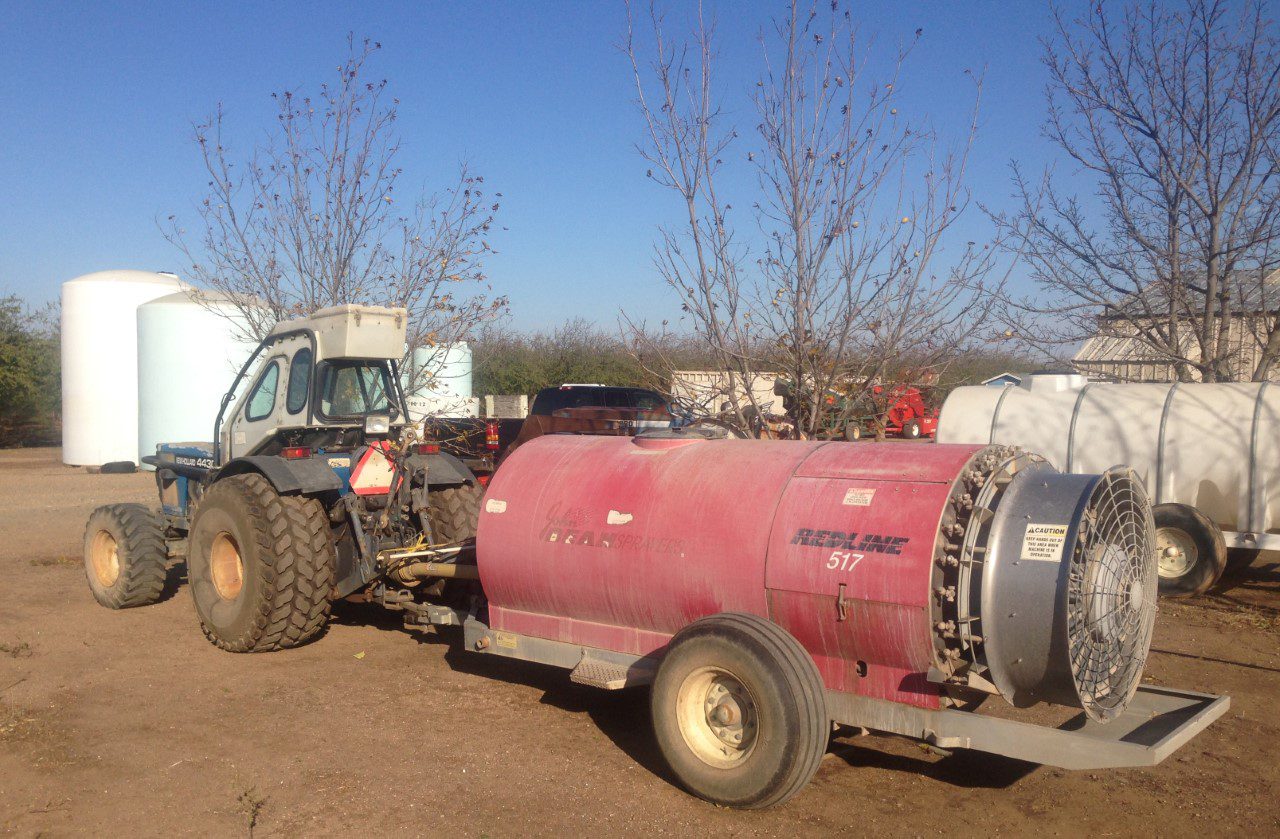
Using 20% less water in the tank in combination with organosilicone adjuvants when making navel orangeworm control applications can boost efficiency of the operation by 20% without loss of efficacy.
Research funded by the California Pistachio Research Board and conducted by USDA-ARS Research Entomologist Joel Siegel had a goal of improving NOW control application efficiency by utilizing organosilicone adjuvants to reduce water use. Standard treatment has been using 100 gallons of water per acre in each tank load to treat five acres at 2 MPH. By reducing water to 80 gallons per acre, Siegel said it is possible to treat six acres with the tank load, covering more ground per day at this same speed. His field trials showed no loss in NOW control with the reduction in water volume.
Siegel conducted two experiments in 2021 to examine the efficacy of an application rate of 80 gallons per acre combined with four organosilicone adjuvants used at their maximum rate. This was compared to the grower standard 100 gallons per acre with the sunscreen adjuvant Cohere. All treatments were made using an airblast sprayer at 2 MPH.
The first trial in July evaluated the maximum rate of the insecticide Besiege combined with the Loveland Adjuvants Widespread Max and Freeway. The second trial in August evaluated the insecticide combination of Intrepid 2F and Bifenture EC at the maximum rates combined with the Momentive adjuvants Silwet Eco Spreader and Silwet 63 Super Spreader. Duration of control was measured at 14 to 16 feet in the canopy using a contact toxicity bioassay.
Looking at overall mortality, Siegel found that the two organosilicone adjuvant treatments were similar, averaging 85.3%. Mortality in the Cohere treatment was 81.8%. The organosilicone adjuvant mortality was significantly higher than that for Cohere, but given the variation in field trials, all treatments were comparable.
In the treatment of Intrepid 2F and Bifenture EC applied at 80 gpa with two organosilicone adjuvants, the two adjuvants differed with the Silwet Eco Spreader having higher mortality than the Silwet 636 treatment.
Siegel said the grower standard applied with Cohere at 100 gpa provided consistent mortality, but the difference between the organosilicone adjuvants was small and performance for all was similar three weeks after application.
He concluded that some variability within and between experiments is expected, but there was no loss of toxicity when 80 gpa was used in both trials.
Several promising adjuvant candidates were identified and organosilicone adjuvants produced by other companies should be equally effective. Siegel noted that product names in the trials are not an endorsement by USDA and are included for information purposes.
His future efforts will be aimed at determining if water volume can be further reduced to 60 to 65 gpa without sacrificing duration of control.

Cecilia Parsons
Cecilia Parsons has spent the past 30 years covering agriculture in California for a variety of newspapers, magazines and organizations. During that time she has been fortunate to witness some of the important events that have shaped this diverse industry and worked hard to examine and explain these events for readers.
When Cecilia first moved to the San Joaquin Valley in 1976, her first journalism job was at a small daily newspaper where she covered “farm news.” From there she branched out to writing for a dairy magazine and a regional weekly agriculture publication.
Cecilia is part of a farming family from the rural community of Ducor where she also raises purebred sheep and is attempting to master versatility ranch horse riding.










